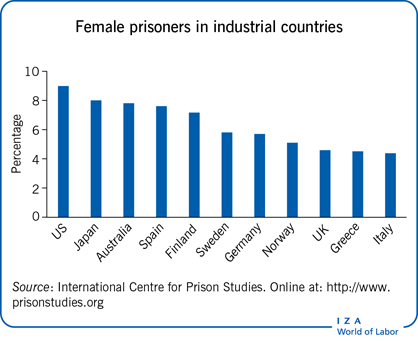Elevator pitch
In recent decades, women's participation in the labor market has increased considerably in most countries and is converging toward the participation rate of men. Though on a lesser scale, a similar movement toward gender convergence seems to be occurring in the criminal world, though many more men than women still engage in criminal activity. Technological progress and social norms have freed women from the home, increasing their participation in both the labor and the crime market. With crime no longer just men's business, it is important to investigate female criminal behavior to determine whether the policy prescriptions to reduce crime should differ for women.

Key findings
Pros
More women are committing crimes than in the past, but they have not yet caught up with men.
The gender gap in crime is partly explained by women’s lower criminal earnings and lower responsiveness to changes in expected criminal earnings.
Since having young children reduces a woman’s propensity to commit crimes, subsidies for having children might reduce female criminality.
Married women are more likely to have children and to be able to insure against negative income shocks through their husbands’ incomes, thus reducing their propensity to commit crime.
Reducing wage disparities across female skilled and unskilled workers might decrease the inclination of women to commit crimes.
Cons
Traditional policies to fight crime have not distinguished between women and men, as not enough is known about what motivates female criminals.
Technological progress and social norms have freed women from the home, increasing their participation in both the labor market and the crime market.
A higher participation of women in the labor market might increase female participation in the crime market.
Convergence in the social roles of women and men might increase crimes committed by women.
The judicial system seems to be more lenient toward female offenders.